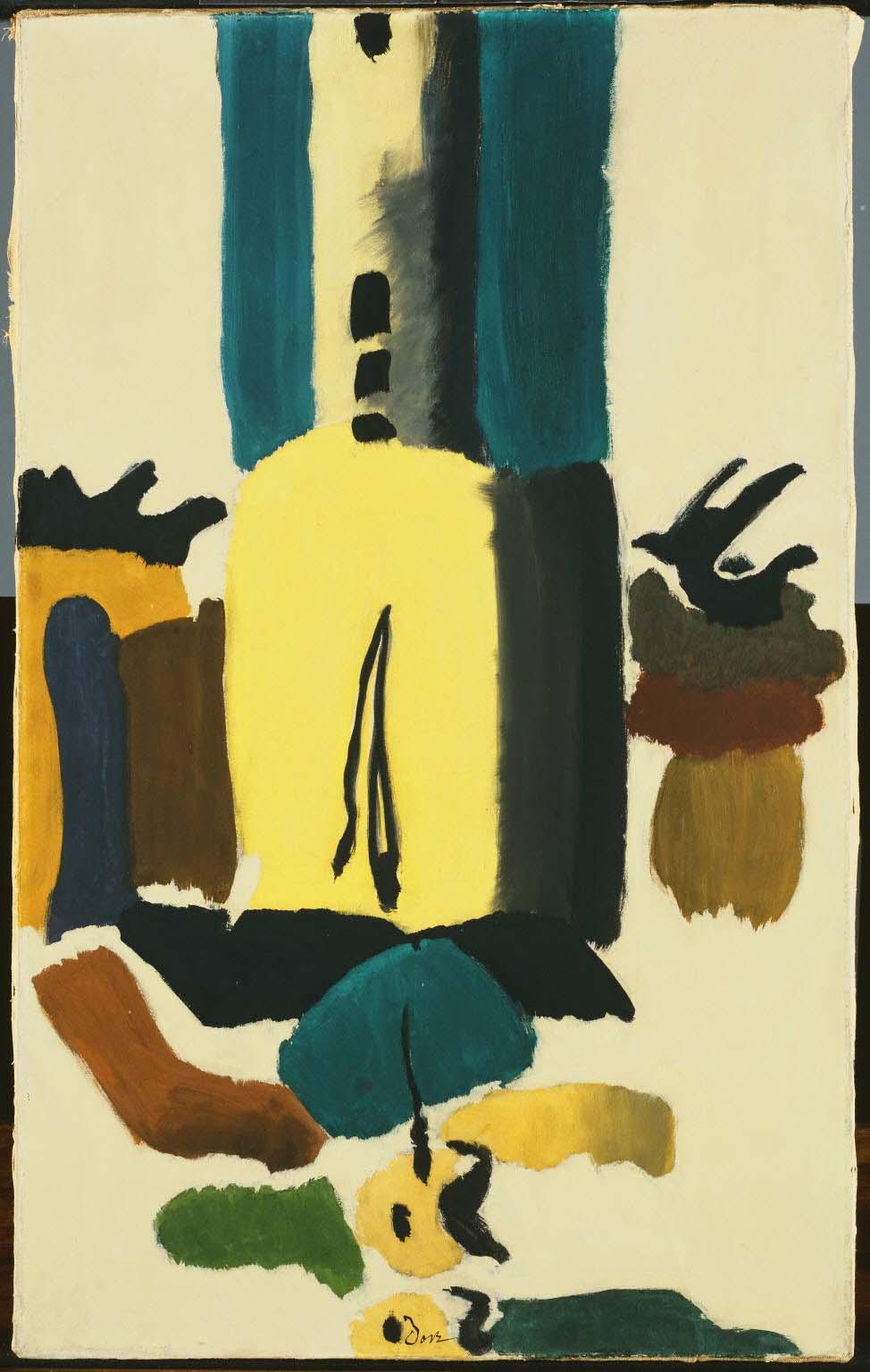Flour Mill II
Arthur G. Dove ( 1938 )

By the late 1930s Arthur Dove’s technique had become more intellectual, analytical and objective, as he experimented with spatial, geometric, and color abstraction. He educed the elements in his paintings to their most basic forms, deemphasized descriptive details, and stressed the flatness and spatial ambiguity of the canvas. His late works, expressions of pure color and form, anticipated the creations of then-emerging abstract expressionists like Gottlieb and Rothko.
In Flour Mill II, Dove transforms the building into a bold configuration suspended in a non-descriptive space. The off-white background serves as a foil to the earthy greens, rusts, browns, and ochers of the abstraction but maintains a density and opacity—due to the matte surface of the wax emulsion medium—that prevent it from being overpowered by the intensity of the colors. Therefore, the design and its ground are treated as two presences of equal dominance on a flat surface. Duncan Phillips compared this abstract treatment of the subject to a “Chinese character” composed of “square, vibrant brushstrokes.”